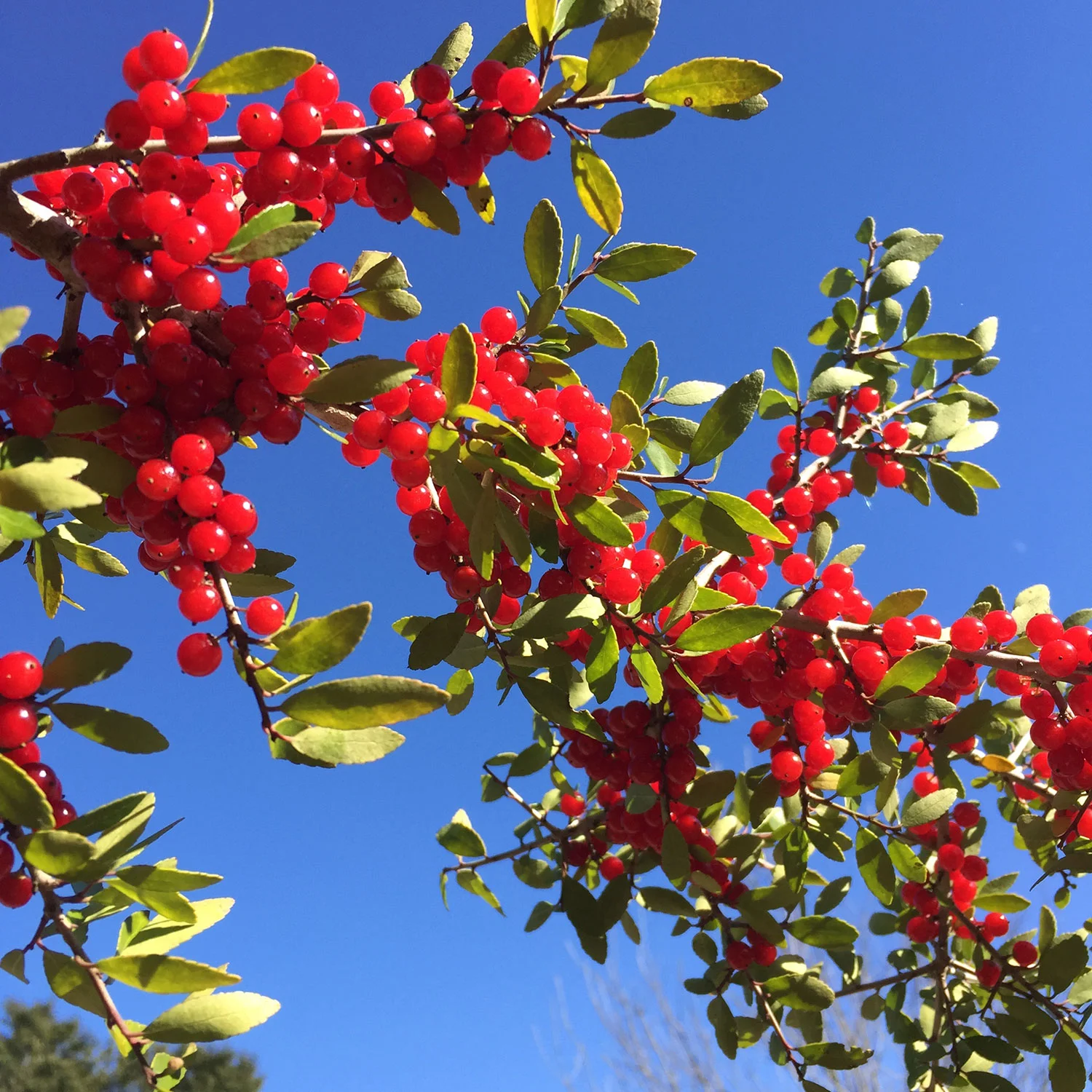The bright red berries of Yaupon olly provide abundant food for birds and are useful for holiday decorating. Photo by Lilly Anderson-Messec
Bird feeding is an enjoyable hobby; it gives us many hours of enjoyment watching birds up close just outside the window. However, I get even more satisfaction when I observe a bird dining on berries or seeds of trees and shrubs that we have planted in our yard. At our last home, we planted an American beautyberry shrub outside our bedroom window. Each autumn it produced many bright purple berries. One December morning, my daughter and I watched a hermit thrush, a male and a female cardinal and a whitethroated sparrow all feeding at once in this beautiful shrub. That was a colorful sight I will always remember.
Yaupon holly is another favorite of mine. We often see large flocks of robins and cedar waxwings feasting on its shiny translucent red berries. Weeping yaupon is a cultivated form of yaupon that makes a pretty accent plant in the landscape. Savannah and East Palatka hollies are also stunning this time of year. Plant hollies in sun for best fruit production.
The red fruit of the flowering dogwood is among the first to be eaten by both birds and squirrels. Remember to plant your dogwood in good, well-drained soil in some shade. They become stressed when planted in full sun.
Many years ago, we planted a native highbush blueberry just outside our home office window. Every summer, we enjoy watching cardinals and mockingbirds selecting ripe berries; I am happy to share the delicious bounty with them.
There are many other great berry producing native plants that birds love – magnolia, wax myrtle, cherry laurel, and viburnum to name just a few. Cabbage palms, bluestem palmettos and saw palmettos also produce fruit for birds and other wildlife. In early October, my husband Jody and I walked along a short trail at St. Marks National Wildlife Refuge that was naturally lined with cabbage palms loaded with ripe fruit. We saw at least 8 catbirds, lots of boat-tailed grackles, a red-bellied woodpecker and a thrush feasting on the berries and a yellowthroat and other birds in and amongst the thicket of cedar, yaupon and palm.
A word of caution: choose your non-native fruiting plants carefully. Many, like the Chinese tallow tree, may be beautiful and attract a multitude of birds. Unfortunately, the birds spread the seeds and the trees take hold outside of your yard in natural areas of forest and wetland crowding out Florida's native species and upsetting the balance of nature.

